On transient climate change at the Cretaceous-Paleogene boundary due to atmospheric soot injections
- PMID: 28827324
- PMCID: PMC5594694
- DOI: 10.1073/pnas.1708980114
On transient climate change at the Cretaceous-Paleogene boundary due to atmospheric soot injections
Abstract
Climate simulations that consider injection into the atmosphere of 15,000 Tg of soot, the amount estimated to be present at the Cretaceous-Paleogene boundary, produce what might have been one of the largest episodes of transient climate change in Earth history. The observed soot is believed to originate from global wildfires ignited after the impact of a 10-km-diameter asteroid on the Yucatán Peninsula 66 million y ago. Following injection into the atmosphere, the soot is heated by sunlight and lofted to great heights, resulting in a worldwide soot aerosol layer that lasts several years. As a result, little or no sunlight reaches the surface for over a year, such that photosynthesis is impossible and continents and oceans cool by as much as 28 °C and 11 °C, respectively. The absorption of light by the soot heats the upper atmosphere by hundreds of degrees. These high temperatures, together with a massive injection of water, which is a source of odd-hydrogen radicals, destroy the stratospheric ozone layer, such that Earth's surface receives high doses of UV radiation for about a year once the soot clears, five years after the impact. Temperatures remain above freezing in the oceans, coastal areas, and parts of the Tropics, but photosynthesis is severely inhibited for the first 1 y to 2 y, and freezing temperatures persist at middle latitudes for 3 y to 4 y. Refugia from these effects would have been very limited. The transient climate perturbation ends abruptly as the stratosphere cools and becomes supersaturated, causing rapid dehydration that removes all remaining soot via wet deposition.
Keywords: Chicxulub; Cretaceous; asteroid impact; extinction; soot.
Conflict of interest statement
The authors declare no conflict of interest.
Figures

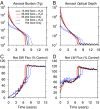

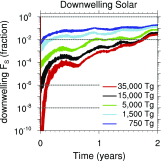
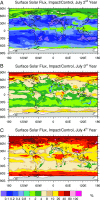

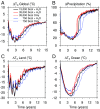




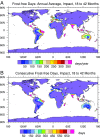

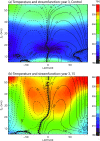
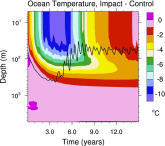
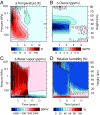


References
-
- Alvarez LW, Alvarez W, Asaro F, Michel HV. Extraterrestrial cause for the cretaceous-tertiary extinction. Science. 1980;208:1095–1108. - PubMed
-
- Schulte P, et al. The Chicxulub asteroid impact and mass extinction at the Cretaceous-Paleogene boundary. Science. 2010;327:1214–1218. - PubMed
-
- Renne PR, et al. Time scales of critical events around the Cretaceous-Paleogene boundary. Science. 2013;339:684–687. - PubMed
-
- Wolbach WS, Gilmour I, Anders E. Major wildfires at the Cretaceous/Tertiary boundary. Geol Soc Am Spec Pap. 1990;247:391–400.
-
- Wolbach WS, et al. Global fire at the Cretaceous-Tertiary boundary. Nature. 1988;334:665–669.
Publication types
LinkOut - more resources
Full Text Sources
Other Literature Sources
Research Materials
Miscellaneous

